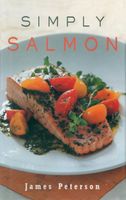Advertisement
Roasting and Baking
Appears in
Published 2001

In the strictest sense, roasting is cooking on a spit in front of an open fire. While I have succeeded in rigging up a spit in front of fireplaces at summer rentals—usually involving impaling a chicken or small fish on a long tree branch—I can’t imagine how someone would spit-roast a salmon. But since most of us don’t have spits, improvised or otherwise, we roast in the oven. So what’s the difference between roasting and baking? Because I’ve never seen the two terms contrasted anywhere, I define them according to desired effect. Baking simply means cooking in the oven until cooked through, but roasting implies using high heat so whatever is being roasted ends up with a crisp brown crust. When roasting salmon—either a whole fish or a large cross-section, the trick is to get the skin to turn crisp without over- or under-cooking the fish, the thinner the salmon (or salmon section), the hotter the oven needs to be so the skin will crisp up before the fish overcooks. If the salmon or salmon section is very thick, it should roast in a medium oven so the heat can penetrate to the center before the skin burns. Giving exact directions on how to do this is next to impossible because everyone’s oven is different, oven thermostats are unreliable, and it’s very hard to come up with a salmon the exact weight you need for a particular recipe. The most reliable approach is to start out in a fairly hot oven—say 400° F—and when the salmon skin starts to turn crisp, turn the oven down to 300° F to continue cooking the salmon without burning the skin.

